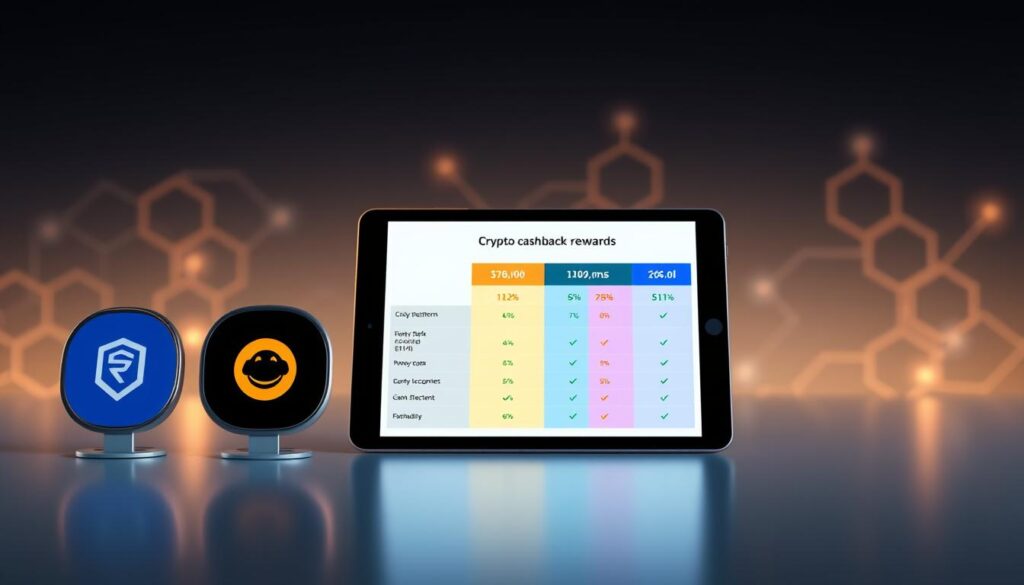Now Reading: Maximize Your Crypto Earnings with Staking-as-a-Service
- 01
Maximize Your Crypto Earnings with Staking-as-a-Service
Maximize Your Crypto Earnings with Staking-as-a-Service
The cryptocurrency market is evolving rapidly, and staking has emerged as a powerful way to generate passive income. As blockchains like Ethereum shift to Proof of Stake models, investors can now earn rewards simply by participating in network security. This approach eliminates the energy-intensive mining process while offering better returns than many traditional investments.

Recent data shows the staking service market has exploded to $9 billion, with projections suggesting it could hit $40 billion by 2025. Platforms now offer annual yields ranging from 2% for Bitcoin to over 82,000% on specialized protocols. These options let users choose strategies matching their risk tolerance and financial goals.
Modern staking services remove technical barriers that once limited participation. You no longer need to run validator nodes or maintain complex infrastructure. Professional providers handle security, uptime, and reward distribution – even offering protection against potential penalties through features like slashing coverage.
Key Takeaways
- The staking market is projected to grow 344% by 2025
- Annual yields range from 2% to over 82,000% across platforms
- Technical requirements like node operation are fully managed
- Proof of Stake adoption creates dual income and security benefits
- Small investors gain institutional-level earning opportunities
Understanding Staking-as-a-Service: An Overview

Staking-as-a-service platforms bridge the gap between complex blockchain protocols and everyday investors. These providers handle validator nodes, security protocols, and reward distribution so users can earn crypto rewards without technical expertise. You keep full ownership of your assets while professionals manage the staking process across multiple decentralized networks.
The system works like a financial partnership: you delegate your crypto to a staking service provider, and they handle network participation. Fees typically range from 5% to 20% of earned rewards – automatically deducted before payouts. This model eliminates three major barriers:
- 24/7 node maintenance requirements
- Minimum stake thresholds
- Slashing risk management
Modern platforms offer real-time dashboards showing reward accumulation and network performance. Proof of Stake blockchains benefit too – increased validator participation strengthens network security while distributing control among more participants.
For investors, this means earning yields comparable to institutional players without locking up funds or understanding coding. The service automatically compounds rewards in most cases, turning passive holdings into growing income streams.
The Evolution of Proof-of-Stake and Its Impact on Crypto
Blockchain technology’s shift from energy-heavy mining to efficient validation marks a pivotal moment in crypto history. Proof of Stake protocols now power major networks like Ethereum 2.0, replacing miners with validators who secure transactions using locked cryptocurrency. This evolution addresses two critical issues: massive energy consumption and limited network accessibility.

Unlike Proof of Work systems requiring expensive hardware, staking lets anyone participate using standard devices. Users lock crypto as collateral to validate transactions, earning rewards proportional to their stake. This approach creates financial incentives for honest behavior while reducing environmental impact by 99.95% compared to traditional mining.
The numbers speak volumes. Analysts predict staking services will overtake the $31 billion crypto mining sector within three years. Key advantages driving this growth include:
- Democratized network participation without specialized equipment
- Faster transaction speeds exceeding 100,000 TPS in some protocols
- Lower fees making microtransactions practical
Decentralization improves as more users join blockchain networks through staking. Unlike mining pools that concentrate power, PoS systems distribute control across thousands of validators. This structure enhances security – attacking the network becomes economically impractical when validators risk losing their stakes.
Modern staking protocols also enable new financial models. Liquid staking derivatives let users earn rewards while maintaining asset liquidity, blending security with flexibility. As adoption grows, these innovations position PoS as the foundation for Web3’s financial infrastructure.
Exploring Different Types of Staking-as-a-Service
Investors now have multiple pathways to earn crypto rewards through tailored staking services. Each model offers distinct trade-offs between convenience, control, and earning potential. Understanding these options helps users align their strategy with personal preferences and technical expertise.

Custodial vs. Non-Custodial Models
Custodial services from major exchanges handle every technical detail. Users surrender asset control but gain hassle-free rewards. These platforms manage validator nodes, security protocols, and tax reporting – ideal for beginners prioritizing simplicity.
Non-custodial providers use blockchain’s native delegation features. You retain ownership while validators stake your tokens for a commission. This approach suits users wanting direct reward access without maintaining nodes. Both models charge fees between 5-20% of earnings.
Liquid Staking and Its Advantages
Liquid staking solves the liquidity problem in traditional methods. Users receive derivative tokens representing staked assets. These can fuel DeFi strategies or be traded freely while still earning base rewards.
Platforms like Lido and Rocket Pool popularized this model by letting users:
- Use staked assets as loan collateral
- Sell positions without unstaking periods
- Compound yields across multiple protocols
This innovation transforms locked crypto into working capital. Investors maintain exposure to staking rewards while pursuing other opportunities – a game-changer for active portfolio management.
Staking-as-a-Service Explained: A Guide to Earning Crypto Rewards
Generating crypto income through staking has become streamlined with modern platforms. Start by vetting reputable providers that support your preferred blockchain assets. Look for transparent fee structures and slashing protection – features that safeguard your investments while maximizing returns.
After selecting a service provider, connect your wallet using secure protocols. This step delegates staking rights without transferring ownership. Your crypto remains accessible, while validators handle the technical process of securing networks and generating rewards.
Modern platforms display real-time metrics through intuitive dashboards. Track reward accumulation, validator uptime, and payout schedules effortlessly. Most systems distribute earnings automatically – daily or weekly – requiring minimal oversight once configured.
Success depends on network health and validator performance. Reliable platforms offer tools to monitor these factors. Advanced services boost earnings through features like auto-compounding, merging staking rewards with DeFi strategies for amplified growth.
New users should prioritize platforms with clear documentation and responsive support. Regular portfolio reviews ensure alignment with market shifts, letting you adjust strategies as needed while maintaining consistent income streams.
Key Benefits and Potential Risks in Staking Services
Navigating crypto staking requires balancing rewards with potential pitfalls. While staking services open doors for passive income, understanding both sides helps investors make informed decisions.
Why Investors Choose Staking Platforms
Accessibility drives adoption. Services eliminate complex node operations and minimum deposits, letting anyone earn rewards with basic crypto knowledge. This levels the playing field between retail users and institutions.
Decentralization strengthens when providers spread validator nodes globally. Distributed networks reduce single-point failures while letting users contribute to blockchain security. Flexibility shines through features like partial withdrawals and liquid staking tokens that work across DeFi platforms.
Critical Factors to Consider
Market swings can erase rewards. A 50% token price drop requires doubling staking yields just to break even. Governance risks emerge when large providers control voting power through pooled assets, potentially influencing protocol changes against user interests.
Security remains paramount. Even trusted platforms face risks like smart contract bugs or validator penalties. Choosing reputable services with insurance funds and transparent audits helps protect staked assets.
Selecting the Ideal Staking Provider for Optimal Returns
Choosing the right staking partner transforms crypto holdings into reliable income streams. Savvy investors prioritize platforms balancing security, transparent fees, and consistent reward schedules. This approach maximizes returns while minimizing exposure to network risks.
Essential Selection Criteria
Leading providers like P2P Validator ($3.5 billion staked) and Stakefish (440,000 ETH secured) demonstrate how asset diversity impacts earnings. MyContainer’s support for 100+ coins shows the value of platform flexibility. Always verify:
Security infrastructure – Multi-sig wallets, insurance funds, and regular audits prevent asset loss. Top service providers undergo third-party penetration testing.
Fee structures directly affect profits. A 15% commission on 10% yields leaves 8.5% net returns. Compare platforms offering slashing protection – some absorb penalties while others pass costs to users.
Reward frequency compounds earnings. Weekly payouts let investors reinvest faster than monthly distributions. Check minimum staking amounts and unlock periods – these determine liquidity access during market shifts.
Regularly review your staking provider’s performance metrics. Network uptime above 99% and active community support signal reliable operations. This due diligence ensures your crypto works as hard as you do.
FAQ
How does staking-as-a-service work?
Staking-as-a-service allows users to delegate their crypto assets to a provider who operates blockchain nodes on their behalf. The provider handles technical tasks like node maintenance and security, while users earn rewards proportional to their staked amount.
What’s the difference between custodial and non-custodial staking models?
In custodial models, the provider holds your assets and manages all staking activities. Non-custodial models let users retain control of their private keys, offering greater security but requiring more technical knowledge.
Why is liquid staking gaining popularity?
Liquid staking lets users earn rewards while maintaining liquidity. Platforms like Lido or Rocket Pool issue tokens representing staked assets, which can be traded or used in decentralized finance (DeFi) protocols without unstaking.
How has Proof-of-Stake (PoS) changed crypto earnings?
PoS blockchains like Ethereum reduce energy consumption compared to Proof-of-Work. This shift encourages broader participation in network security, enabling users to earn rewards through staking without expensive hardware.
What risks come with staking services?
Market volatility can affect reward value, and some protocols impose lock-up periods. Governance risks, like protocol changes impacting returns, also exist. Choosing reputable providers minimizes these concerns.
What should I look for in a staking provider?
Prioritize providers with strong security practices, transparent fee structures, and consistent reward payouts. Platforms like Coinbase or Binance offer user-friendly interfaces, while others like Kraken emphasize flexibility.
Are my assets safe with staking providers?
Reputable providers use measures like cold storage and multi-signature wallets. Non-custodial services enhance safety by letting users retain asset control. Always verify audits or insurance policies before committing funds.
Can I earn rewards without locking my crypto?
Yes—liquid staking protocols allow you to stake assets while receiving tradable tokens. This lets you participate in DeFi or sell tokens without exiting your staking position.
How does market volatility impact staking returns?
Rewards are typically paid in the staked cryptocurrency. If its value drops, earnings may lose purchasing power. Diversifying across assets or using stablecoin staking options can mitigate this risk.












